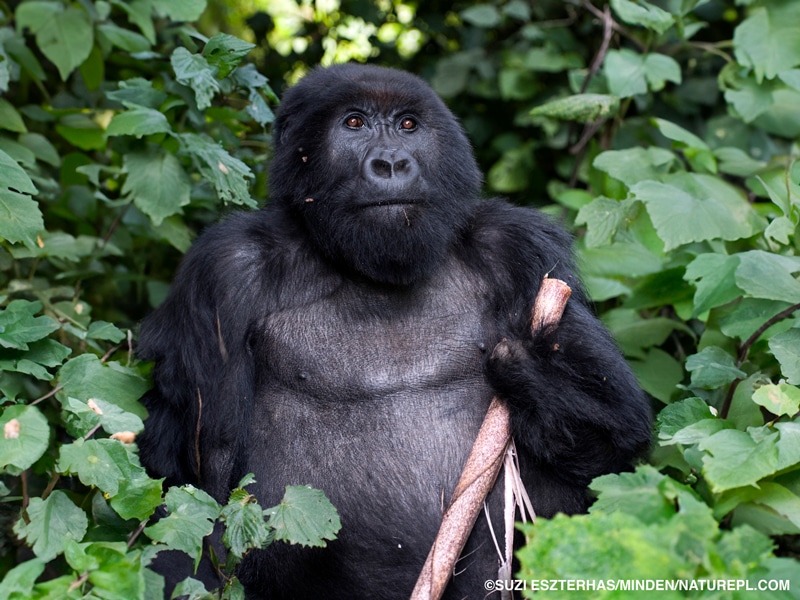About the Book
Intended for a broad range of policymakers, investors, industry experts, decision makers, academics, researchers, and NGOs, this publication aims to influence debate, practice, and policy, seeking to reconcile ape conservation and welfare with economic and social development, through objective and rigorous analysis.
Read MoreExecutive Summary
The executive summary introduces the concept of ape health and summarizes the book, which it describes as giving an unprecedented overview of one of the most significant threats to bonobos, chimpanzees, gibbons, gorillas, and orangutans.
Read MoreFull Text: Volume V
This volume examines ape conservation and welfare through the lens of disease and health, exploring such factors as the ethics of intervening in and managing ape health; the impact of research and tourism activities on apes; the One Health approach; and disaster management. It shows how the welfare of apes is interrelated with that of the people who share their habitats, while also demonstrating the benefits of integrating ape conservation in health, socioeconomic activities, and regulatory policy and practice.
Download BookOverview, Credits, Foreword, Notes, Acknowledgments
The preliminary pages of Volume V include an overview of its contents, a foreword, and acknowledgment of the people who made the publication possible.
Download PDFForeword
Arcus Foundation President and Founder Jon Stryker reflects on the entire State of the Apes series and the importance of this fifth and final volume, “the timeliness of which is breathtaking,” he writes. “The authors began developing this latest book in the series in 2020, just four years after the Ebola pandemic of 2014–2016 and just as the global debate raged regarding the novel SARS-CoV-2 virus.”
Read MoreApes Overview
The overview provides a brief description of each great ape and gibbon species, as well as a detailed explanation of their socioecology, a table of their common and scientific names and the countries in which they are found, and maps showing their distribution.
Download OverviewIntroduction to Sect. 1: Disease, Health and Ape Conservation
The Introduction provides an overview of the major threat that disease and health issues represent to the survival of apes and other species, both in their natural habitats and in captivity. It acknowledges that the recent COVID-19 pandemic has lent a sense of urgency to much of this research and debate.
Read MoreCh. 1: Review of Ape Disease and Health
Chapter 1 provides an overview of the factors that impact the health of wild and captive apes, giving evidence of known pathogens and highlighting the areas that require greater research and investigation.
Read MoreCh. 2: The Role of One Health at the Human-Ape Interface
Chapter 2 provides an overview of the history and core principles of the One Health approach and explores its role in ape conservation, in the context of the challenges of environmental degradation and biodiversity loss.
Read MoreCh. 3: The Impact of Tourism and Research Activity on Ape Health
Chapter 3 assesses the risks of disease transmission by humans who come in close contact with wild habituated and captive apes, identifies the costs and benefits of habituating apes and keeping them in captivity for research and tourism, and discusses current knowledge gaps and ways to address risks linked to such activities.
Read MoreCh. 4: Managing Ape Health: Informing Interventions
Chapter 4 presents a historical recap of ape health-focused interventions, and examines reasons to intervene, skills required for effective interventions, the ethical implications of vaccination, and more. It also delves into real-world scenarios that are rarely covered in ape health management resources.
Read MoreCh. 5: Ape Health and Ethics
Chapter 5 explores the moral problems that arise when addressing ape health within care and conservation contexts, describes how compassionate conservation can address tensions between individual and population health concerns, and highlights how decision-makers can remain resilient in the face of significant challenges.
Read MoreCh. 6: Disaster Management and the Protection of Apes
Chapter 6 provides an overview of the principles of disaster management, using case studies to show how they can be adopted to mitigate the impact of disasters in different ape environments, and considering a wide range of risk factors to inform the development of mitigation measures to enhance the survival of apes in a disaster context.
Read MoreIntroduction to Sect. 2: The Status and Welfare of Great Apes and Gibbons
The introduction to the second section of the book provides an overview of chapters that look at the impacts of industrial development projects on apes and the welfare of apes in captivity.
Read MoreCh. 7: Status of Apes: Impacts of Industrial Development Projects on Apes
Chapter 7 builds on previous State of the Apes volumes, providing updated summaries of the potential impacts of industrial development projects on apes, species-specific responses to these impacts, and the best mitigation strategies currently available.
Read MoreCh. 8: The Welfare and Status of Captive Apes
Chapter 8 focuses on understanding, measuring, and improving the welfare of captive apes; and provides updated statistics on captive ape populations in zoos, rescue and rehabilitation centers, and sanctuaries around the world.
Read MoreAnnexes
Annexes I-XI include a summary of ape diseases, infections, and other health issues; positive developments in wildlife welfare legislation; expected prevalence of industrial development projects and corresponding risks to apes; and confirmed transmissions of viral pathogens from humans to apes.
Read MoreEndpages
The endpages include Acronyms and Abbreviations, Glossary, References, and Index.
Download PDFApe Population Abundance Estimates
In this online-only annex, ape population abundance estimates are presented at the level of a protected area and/or its buffer zone, a logging concession or group of concessions, or any discrete area where a survey has taken place in the past two decades.
Download PDFPolicy Briefing
This briefing describes how policymakers, conservationists, philanthropic institutions, researchers, and scientists can take action to improve ape health and welfare.
Read More

